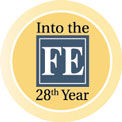
Private sector engagement for inclusive development - the untapped opportunities
Md. Rubaiyath Sarwar | Monday, 7 December 2020

 The bid for sustainability and scale has been catalysing donors to invest in the private sector for interventions primarily in economic sectors but also increasingly in social services sectors. Private sector investment for inclusive development is foundationally different than Corporate Social Responsibility or CSR. When a sanitation pan manufacturer invests in developing a durable pan at a cheaper price for the households in the bottom of the pyramid, they are investing in inclusive development. However, if an FMCG that sells handwashing products, supply 1000 latrines to flood affected households they are doing CSR that is aligned to their product's value proposition. The latter strategy does not have a market driven prospect for scale while the first strategy does. As the donors push forward to an exit strategy for its funding in developing countries, private sector engagement would become critical. In this context, it is important to understand the landscape for private sector led inclusive growth in Bangladesh and define the untapped opportunities that would shape the future.
The bid for sustainability and scale has been catalysing donors to invest in the private sector for interventions primarily in economic sectors but also increasingly in social services sectors. Private sector investment for inclusive development is foundationally different than Corporate Social Responsibility or CSR. When a sanitation pan manufacturer invests in developing a durable pan at a cheaper price for the households in the bottom of the pyramid, they are investing in inclusive development. However, if an FMCG that sells handwashing products, supply 1000 latrines to flood affected households they are doing CSR that is aligned to their product's value proposition. The latter strategy does not have a market driven prospect for scale while the first strategy does. As the donors push forward to an exit strategy for its funding in developing countries, private sector engagement would become critical. In this context, it is important to understand the landscape for private sector led inclusive growth in Bangladesh and define the untapped opportunities that would shape the future.
Among the bilateral donor agencies, USAID, FCDO (formerly UKAID DFID), DFAT (AusAid) and SDC (Swiss Agency for Development Cooperation) have long been the leaders in investment in private sector led development. Areas of interest includes- food security and nutrition, economic growth for increasing income and employment primarily. USAID's ambition with regards to private sector engagement is reflected under its vision for food security improvement where it states - "The program also expects to increase non-rice production by 20% and improve private sector investment by $1.0 billion." On the other hand, DFID/FCDOs investment in private sector in Bangladesh is driven by its strategy of lifting the bottom billions at the bottom across the globe. Sectors that DFID/FCDO is investing in includes- skills development, jobs, workplace safety, financial inclusion, investment climate. SDC has been a key donor in promoting private sector investment specially in agricultural markets in hard to reach areas. It also has been supporting investments for women's economic empowerment and in social services market which includes sanitation.
Among the multilaterals, World Bank has investments in private sector engagement through its private sector arm, IFC. Major interventions are concentrated in investment climate, policy reform programmes, enabling environment and competitiveness of export-oriented sectors. The German Agency for Technical Cooperation (GIZ) has been a long-term advocate of private sector engagement- it currently focuses on niche and specialised sectors which includes renewable energy. Among the UN Agencies, WFP is currently pursuing private sector investment for rice fortification.
There are different models of investment that are being pursued. This includes- matching grant and challenge fund, where the donor through its aid project or the implementing agency provides a catalytic fund to the private sector for innovations. This is similar to partnership facilitation contracts where the donor through the aid project signs an agreement with a selected private sector to pursue a common development goal in a targeted sector. The matching grant and challenge fund typically involve competition and fixed contract policy while partnership agreements are more fluid and evolves over time. Some donors prefer service delivery contract where the private sector is contracted to provide specific services to target population. The latter is pursued more for interventions where immediate response to a development need is prioritized rather than scalable solution. Empirical evidence and review of recent tenders, especially in the wake of COVID 19, show a spike in investments in catalytic funding for private sector led growth.
The shift towards private sector led growth has been instigated by several factors. First, donors are searching for creative and alternative options for financing development aid. For instance, DFAT has recently launched $40 million Emerging Markets Impact Investment Fund (EMIF) for high impact SMEs across South East Asia and the Pacific. This non-grant instrument will finance financial intermediaries to fund SMEs, especially for COVID 19 recovery. Impact investment, blended financing and non-grant financing is expected to become a key source of funding development aid with donors like USAID also embracing it for example for health finance which has traditionally been a domain for the public sector. Second, the priorities of the donors are shifting from social development and humanitarian response to economic development as the dynamics of the world's economic affairs and relations are changing fast. In Bangladesh, 63% of the net ODA of $3040 million in the fiscal year 2017-2018 was spent on economic infrastructure and services. Another 7.0 % on production and 3.3% on multisector response. All of these involve private sector engagement in various forms. The newly formed Foreign, Commonwealth and Development Office (FCDO) of the UK Government has identified Business Partnership Programme (BPP) as a priority area of support. The BPP is expected to support UK businesses to access new markets and diversify their value chains which in turn is expected to support firms in developing countries to engage in export through integration in global value chains. The BPP is also expected to support developing country firms to tackle their growth challenges related to access to investment finance, limited international market access while creating jobs.
While these opportunities can leapfrog private sector engagement and investment for inclusive growth there are several systemic challenges that can compromise effectiveness of the engagement. Private sector in Bangladesh largely remains at dark about collaboration opportunities with the donors. The engagement remains concentrated with limited number of firms in agriculture, livestock, fisheries, finance, technology and health markets. There appears to be crowding out affect which can create further division amongst firms receiving development aid and firms left out. There is no central coordination mechanism that can be used by donors and private sector to track donor investment and reduce overlaps in funding; due diligence in contracting is not enough to address this barrier. Also, private sector in general lacks the capacity to apply for development finance. This remains a domain of the NGOs. A symbiotic relationship between the NGOs and the private sector can bolster the movement towards inclusive growth. Climate change, education, migration, skills development, and digitization are some of the emerging themes that would be pivotal in addressing the poverty barriers of Bangladesh. Interventions in these sectors still remain dependent on public sector and NGO led delivery channels. Innovative multi-stakeholder partnership models that involve the NGOs, donors, private sector and the public sector can ensure the bridge between commercial viability and sustainable and scalable inclusive growth.
....................................................................
The author of the article is managing director, Innovision Consulting. He can be reached at [email protected]